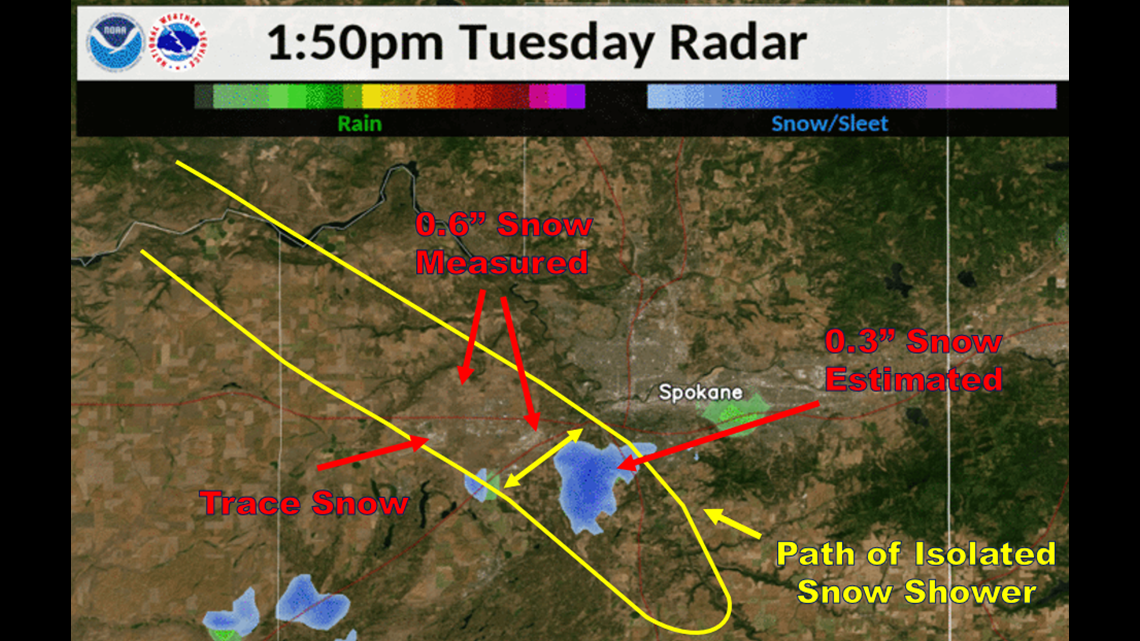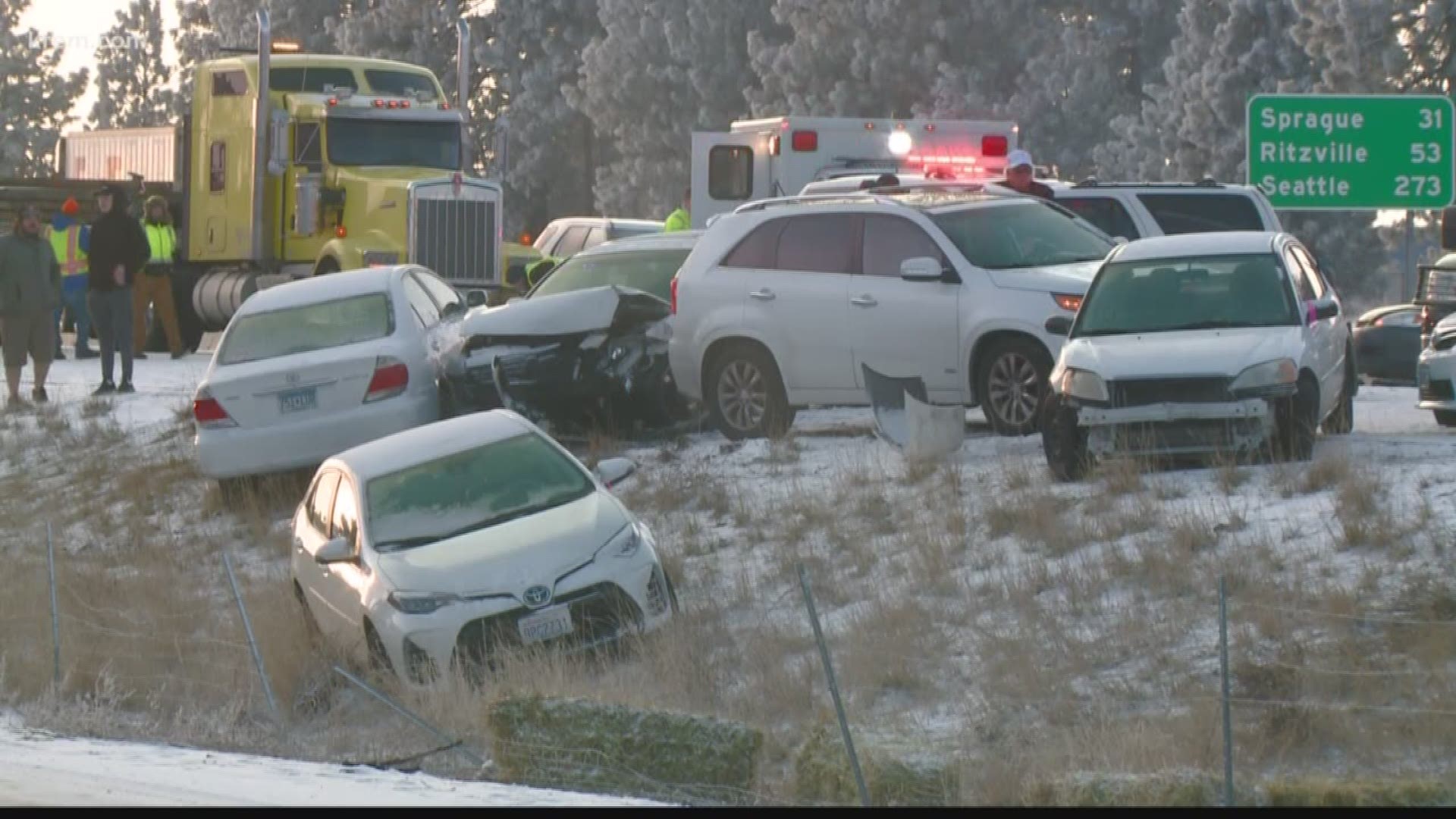SPOKANE, Wash. – The slick road conditions that caused a massive pileup on Interstate 90 in Spokane in late November were extremely difficult to predict, according to a new report from the National Weather Service.
The Nov. 26 incident on a 10-mile stretch of I-90 between Medical Lake and Geiger Boulevard involved 127 vehicles in 35 separate crashes. The largest crash involved 37 vehicles.
It was the largest motor vehicle accident in Spokane County history, the weather service said.
Only six people were taken to the hospital and no one was critically injured.
According to the weather service, all available data indicated that road conditions were fine until about 1 p.m. that day. The crash happened about an hour later.
The weather service was predicting a snow event for Nov. 27. All weather predictions for Nov. 26 mentioned snow showers in North Idaho, but not Spokane.
“Overall, Tuesday was a benign weather day,” said Andrew Brown, spokesman for NWS.
Brown said Washington Department of Transportation sensors indicated that roads were above freezing, in the 36-40 degree range, when the snow shower started.
At 1:18 p.m., the weather service issued a short-term forecast that said “flurries may get quite heavy” and they would be “localized and short lived.”
That quick weather change led to rapidly developing icy conditions on I-90. The snow shower that took place was isolated to a thin band that stretched across the highway.


“It is theorized that the initial snow that fell on the road melted until the road surface temperatures reached freezing and then turned to ice,” Brown said.
The state department of transportation told KREM it did not pre-treat the roads before the snow event.
The weather service said reasons for the extreme nature of the crash included how isolated the snow shower was – few people saw it before they encountered the icy roads – poor visibility during the snow shower, the air and road surface temperatures, and the time of day.
“Given the very low probability and isolated nature of this snow shower, this is a difficult outcome to wrap our heads around,” Brown said.
The weather service said it may issue Snow Squall Warnings through a wireless emergency alert for similar incidents in the future to geotarget messages about unique weather alerts such as the one that led to the I-90 crash.

